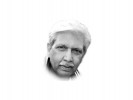Managing Afghanistan
Afghanistan is a sore, but it has been so for all the years of Pakistan's existence. More importantly, we have lived through it and kept a decent face. The Soviets and the Americans came and occupied it, and we lived through it despite the hostility that came from it. And, now under the Taliban, the animosity continues, betraying a long-held dislike, if not venom. The history of Afghan animus is well established. Zahir Shah and his cabal knew how to hold their sentiment; the latter guys are far more cavalier and exhibitionist. There is a growing feeling within Pakistan that we have been playing the nice guy far too often, and it is time to pay back in a way that the Afghans will understand better.
When nations turned states at various times in history, they defined their territories. Czarist Russia and Iran, for example, established their own defensible territorial limits, and hence their borders. Much later, the British in India demarcated the limit of their dominion and control. What remained became Afghanistan over time through various internal struggles between the strongmen of the era.
Afghanistan began to be recognised as a state somewhere in the 19th century. It was and is a default state composed of varying ethnicities that link across recognised borders of Afghanistan, with communities such as the Pashtuns, which exist on both sides of the Pak-Afghan border.
Indefensible territories left over by adjoining states as no-man's land were unified under Dost Mohammad Khan, who is considered the founder of the modern Afghan state. It thus became a buffer state to its neighbouring regions, helping avoid direct clash between the empires of the time. Disparate groups, ethnicities, languages and loyalties have, however, kept Afghanistan in a state of constant agitation within and........






















 Toi Staff
Toi Staff Sabine Sterk
Sabine Sterk Gideon Levy
Gideon Levy Penny S. Tee
Penny S. Tee Waka Ikeda
Waka Ikeda Daniel Orenstein
Daniel Orenstein Grant Arthur Gochin
Grant Arthur Gochin
